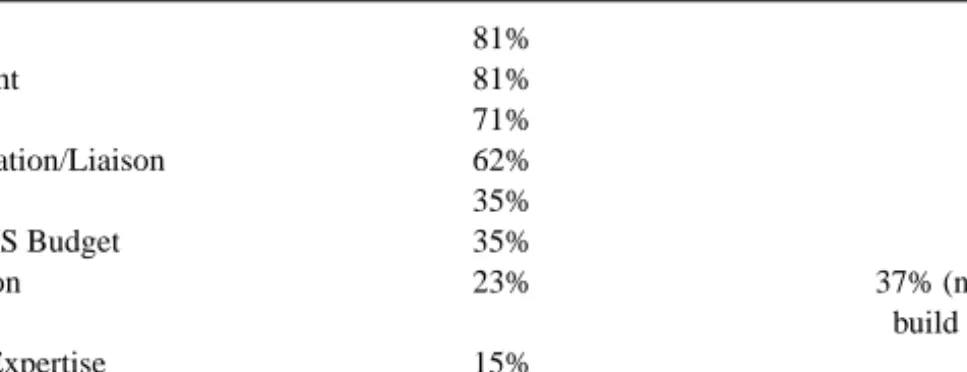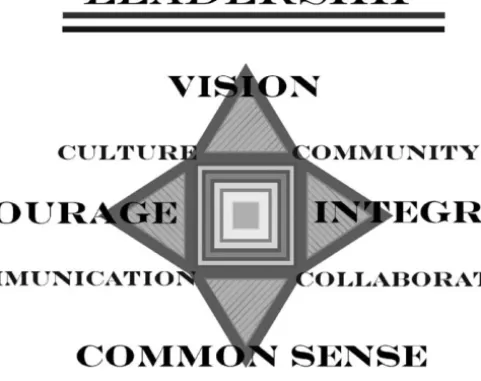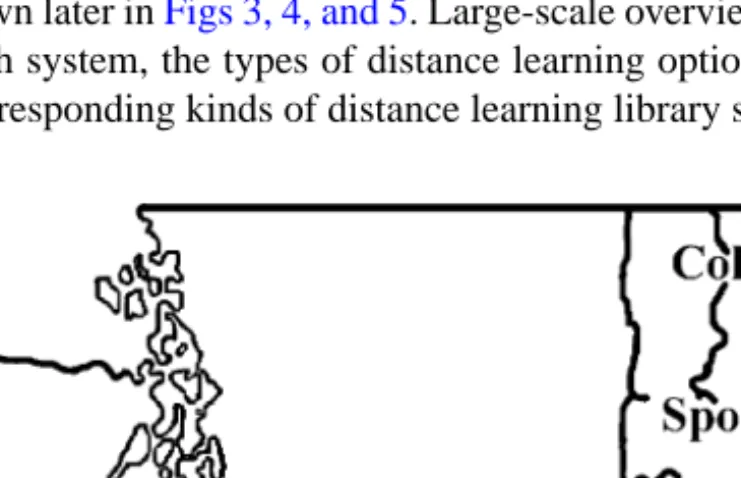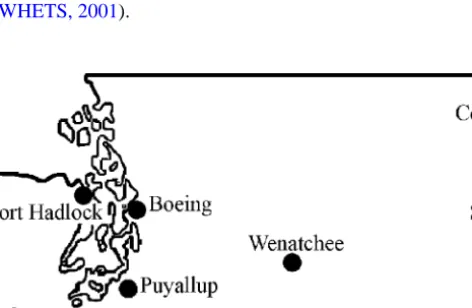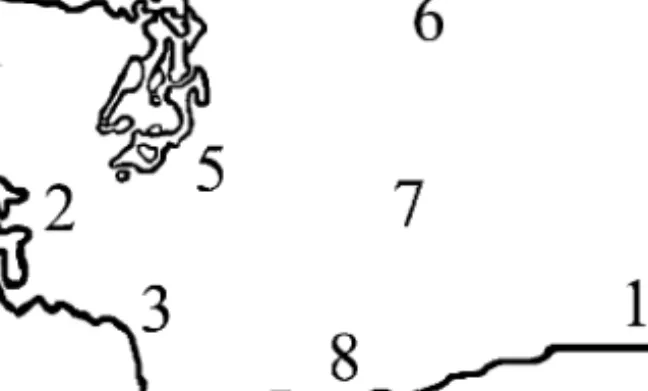In the "old work," librarians responded to patron requests for help using the library's resources. But in the "new work," librarians will take the lead in determining what users actually need.
THE CHALLENGE OF THE NEW METAPHOR LIBRARY AS REAL WORLD
Within the LIBRARY AS COMPUTER metaphor, the formal characteristics of the organization itself were subjected to intense scrutiny. Now, within LIBRARY AS THE REAL WORLD, a person's traits will be subject to equally intense scrutiny.
POSTSCRIPT: QUESTIONS FROM THE LIBRARY FLOOR
The traditional organization of the library, however, subordinated this problem to the routine needs of collection management. First, it fully recognizes the need to change the organizational structure and traditional "enterprise culture" of the library.
INFORMATION OFFICERS IN HIGHER EDUCATION 夽
INTRODUCTION
Some institutions saw the role as exclusively focused on IT, others began to view information and assistive technologies as a strategic asset and created positions with broader responsibilities, such as libraries, institutional research and strategic planning. Some appointed a vice president, vice chancellor, or vice provost; others began using the actual title of Chief Information Officer (CIO);
CHIEF INFORMATION OFFICERS – THE ROLE EVOLVES
The evolving strategic nature of IT decisions, growing and unresolved tensions between central and distributed IT, and the seemingly endless demand for additional resources necessitated the development of a "technology czar."
A VARIETY OF CIO MODELS EMERGE
Vision is considered a critical component of leadership and was identified as a success characteristic by 42%, although only 35% considered it a key function of the CIO. Perhaps this development indicates a further maturation of the CIO role into more of a distributed responsibility.

FROM IT MANAGEMENT TO IT LEADERSHIP
The framework of the IT leader is the whole of the enterprise: the institution, its current and future communities, its resources, its competitors, external influences, etc. This distinction in terms of reference can be difficult for some IT managers in colleges and universities. to step into IT leadership positions without significant exposure to and understanding of the culture, vision, goals and success criteria espoused by academics.
FIVE CRITICAL LEADERSHIP ROLES OF A CIO
The CIO plays a critical role in determining how IT can help advance the interests of the institution. The output of the prioritizing role should be a strategic IT plan for the institution.
FACTORS RELATED TO THE SUCCESS OF A CIO
This lack of recognition tends to stem from the perception that the CIO's role is to look after the IT organization rather than look after the institution through IT application. The CIO must be able to anticipate and enable change without being directly associated with only a portion of the IT community within an institution.
KEY ATTRIBUTES OF A CIO
TOO MANY CHIEFS?
Not that I have all the answers, but given the dilemma for today's CEOs in creating executive teams, I believe that "Information Age CEOs" need to think about how best to pay attention to critical areas both when they begin to emerge and require special attention, and in the longer term as they spread through the culture of an organization. Such attention to the role of managers and senior administrators with respect to critical issue areas could help avoid the difficulties that the CIO role has had over its lifetime up to this point.
A PHILOSOPHICAL APPROACH
But if this is not democracy, what ideals should govern libraries in the United States. The movement for intellectual freedom brought recognition to the pluralistic society served by libraries in the United States.
REVIEW OF LIBRARY LITERATURE
The consistency in Gewirth's principle of Generic Consistency is in the rights of the moral agent. The generic rights consist of the freedom and well-being necessary for purposeful activity.
SERVICE AT A DISTANCE
Echoing many of Sanchez's ideas, Fichter (2000) points out that a library can create self-sustainability and secure continued funding by becoming a "sticking place." Regularly updating content builds trust in your virtual library as a useful resource. Organizing the virtual library at NCU involved gaining access to resources and developing an interface for the ELRC.
STUDENT SUPPORT
The list is growing through the use of local library consortia, the Amigos, to help keep costs down. The plan outlines the ELRC's mission and goals and future goals with specific timelines for obtaining additional resources.
MENTOR SUPPORT
Links to articles on distance learning and student-centered education encourage faculty mentors to improve instruction by understanding the principles of distance learning. The online assessment website provides information to encourage tutors to include assignments that require a higher level of thinking skills and research.
PROMOTION OF THE ELRC
There is an application form for tailoring Information Literacy to a course or subject on the ELRC Mentors website. The ELRC staff works to build such a community through its policies, resources and interactions with all of its customers.
CONCLUSION
As globalization continues in the economic sector, the globalization of library services will continue to expand to meet the needs of students. The Journal of Library Services for Distance Education, 2 (4 February 2002), from: http://www.westga.edu/∼library/jlsde/vol2/1/Alee.html.
OVERLAPPING DISTANCE LEARNING PROGRAMS OF TWO HIGHER
EDUCATION SYSTEMS IN WASHINGTON STATE
With the race to provide distance learning opportunities, nowhere is this more true in higher education planning than in the development of distance learning programs. Another goal of this study is to provide a first prototype for the collection of the types of data relevant to planning distance learning programs and library services in support of these programs.
THE STATE
This study provides an overview of the distance learning programs and their supporting library services offered by the Community Colleges of Spokane (CCS) district and Washington State University (WSU), two systems of higher education that share some geographic territory in the state of Washington. , USA. The overall sparseness of the population in most of the state is due to the fact that more than half of its land areas are mountainous.
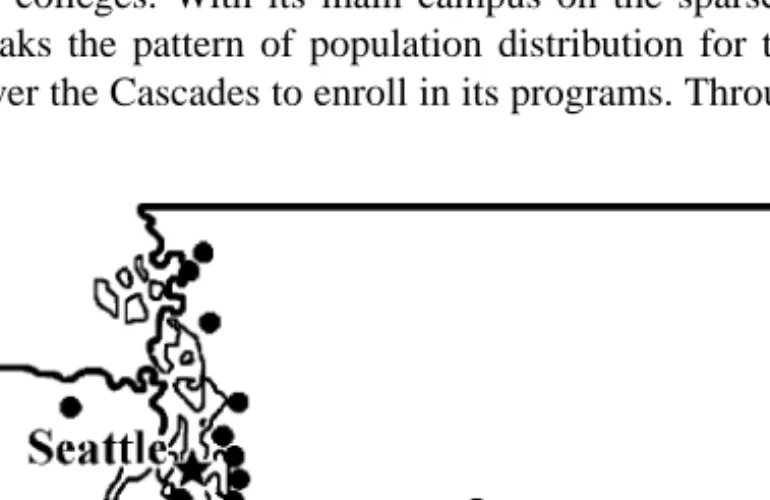
DEFINITIONS
The adaptation of unique library and information services for distance education programs within an environment of duplication and overlap of course offerings further added to the challenges of these librarians. Described here are unique adaptations used to bring library services of academic merit to the distance learning programs offered by these two systems.
THE SYSTEMS
2 to show the geographic relationships of the cities to the CCS and to each other. Distance learning programs on WSU campuses and library services for them will be discussed later.
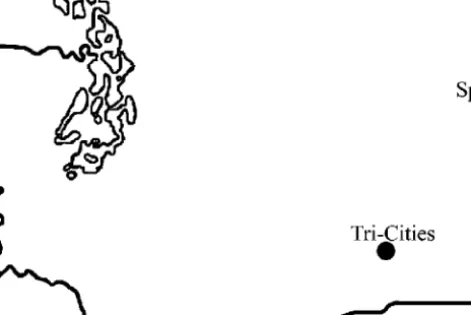
ADMINISTRATIVE OVERVIEW AND CONCLUSIONS
Search State University Book Collections directly or linked from Griffin by author, title, author/title, subject, keyword. Retrieved November 17, 2001, from http://www.distance.wsu.edu/pubs/handbook/. State planning and implementation of educational telecommunications systems in the West.
AS AN ASSET
In particular, the value of information has been extremely difficult to identify or quantify. The purpose of the interview was to identify the characteristics of information that were considered essential by this senior manager.
A RESOURCE-BASED VIEW OF INFORMATION
Identification of information as an asset is proposed as a method to enable the recognition of significant information properties by executives. The Hawley Report (KPMG/IMPACT, 1994) positioned this recognition of the importance of information as being crucial.
RESOURCE-BASED OR KNOWLEDGE-BASED ORGANISATION
8) “Substitutions for any specific item or set of information are available and can be quantified as more or less expensive” (Burk & Horton, 1988, p. 18). Replacements for lost or destroyed information may be available, but it is unlikely that a readily available replacement will be available for every item in a collection.
OUR RESEARCH – AIMS AND OBJECTIVES
OUR RESEARCH – INFORMATION AS AN ASSET
From the interviews analyzed to date, it is clear that linking the business benefits of information management to commercial objectives is key to senior managers recognizing the value of information in their organizations. The information managers were members or guests of the Aslib Information Resources Management group, a special interest network focused specifically on information resources management (see http://www.aslib.co.uk/members/contact.html) .
REVISING THE LIST
While the importance of "knowledge" was recognized, it was felt that concentration on types of information or information assets would provide a firmer foundation for later work. The next phase of the research study was to identify the characteristics of information most strongly associated with each of these types of information assets.
ATTRIBUTES OF INFORMATION AS AN ASSET
The argument was that “people are not resources for an organization; they are, of course, people.” Instead, the term 'people management' was recommended. We argue that the properties of information traditionally identified can be applied to the information assets identified by the Hawley Commission.
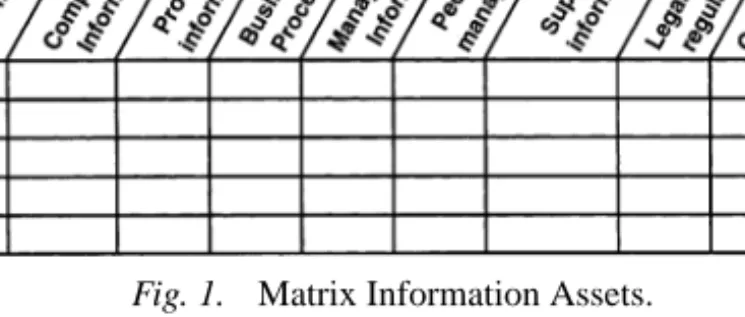
INTERVIEWS WITH SENIOR EXECUTIVES
One of the advantages of repertoire grid is that it has been identified as a useful method for reducing observer bias (Stewart et al., 1981, p. 4). They were much more specific to the individual manager's own perceptions of the different relevance of the information assets.
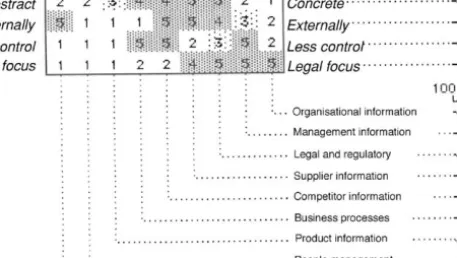
LIBRARY AND INFORMATION SCIENCE
Currently, there are 56 master's degree programs in North America that are accredited by the American Library Association (ALA). This is followed by an assessment of the educational content of Master's programs, insofar as this is possible on the basis of information supplied by the programs themselves (including available course syllabi).
COURSES IN LIS PROGRAMS
From a pedagogical point of view, a mixture of the two types of tasks is likely to be most effective. Perhaps more telling than anything else in the curriculum is the content of the courses offered by the LIS programs.
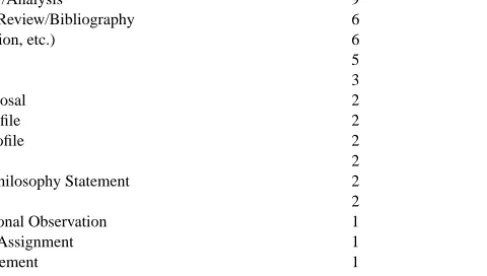
WHAT DOES THE LITERATURE SAY?
The connection between ethics and management is not common in the literature and rarely appears in management courses. Leadership is a recurring theme in the literature; the previously described search yields 134 items on leadership.
PROPOSED COURSE CONTENT
Contemporary thinking about systems theory seeks to understand how elements of the organization - social, technical, functional, political, economic, etc. There may also be disagreement over the order of course content based on the style and interests of the instructor.
PSYCHOLOGICAL CHARACTERISTICS AND ENVIRONMENTAL INFLUENCES
VERSUS NONTRADITIONAL ACADEMIC MAJORS
This study used a social-cognitive perspective on achievement and career decision-making in an attempt to explain college women's academic major choices. From a social-cognitive perspective, an individual's behavior is shaped by their experiences in the environment.
REVIEW OF THE LITERATURE
Second, for the psychological variables, the hypothesis was assumed that women were in the traditionally male dominated. Third, it was hypothesized that women in the male-dominated major group would have higher career aspirations and vocational commitment compared to women in traditionally female-dominated academic majors.
RESULTS
Women in the non-traditional academic group appeared to express higher career aspirations than women in the traditional academic group. Thus, women in the non-traditional academic group have higher levels of parental support and have mothers with higher levels of education than women in the traditional academic group.
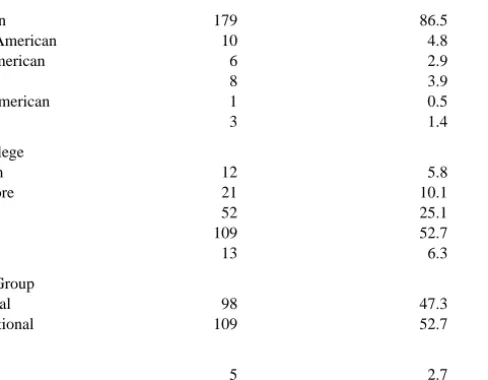
DISCUSSION
In considering the influence of role models in determining women's career choices, a more useful variable to examine may have been the father's specific job and the influence of other male role models. The traditional definition of achievement motivation, which includes behaviors that are valued in men but discouraged in women, is inadequate as a framework for discussing women's performance behaviors. first step in explaining the differences in how women and men make the decision to pursue performance behaviors.
APPENDIX A
APPENDIX B
If a group I belong to plans an activity, I'd rather organize it myself than let someone else organize it and just help.
APPENDIX C
Be as specific as possible - eg. electrical engineer instead of engineer or kindergarten teacher instead of teacher).
APPENDIX D
APPENDIX E
APPENDIX F
For questions 8–11, please consider as your mother and father those people with whom you had a parental relationship. Again, mom and dad can include a stepparent, foster parent, or other adult caregiver who has been responsible for you all or most of your life.

